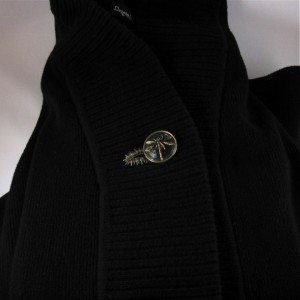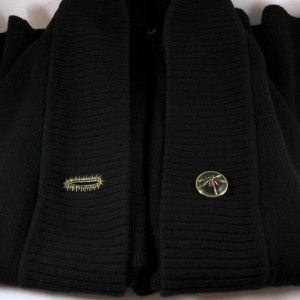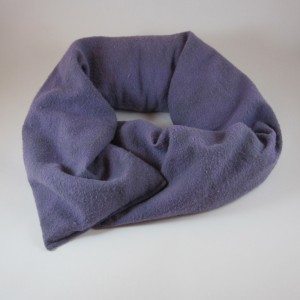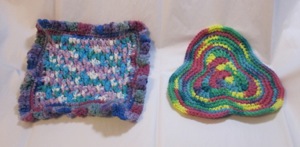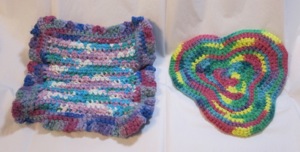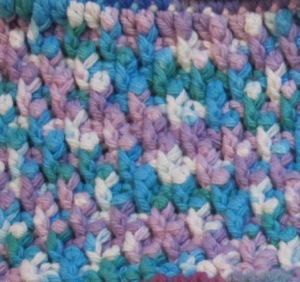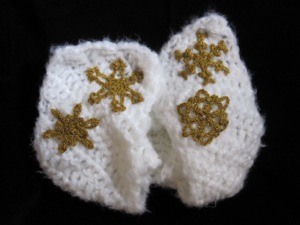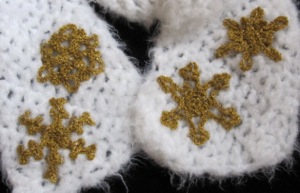I live in t-shirts all year round, the nicer kind, typically with v-necks or scoop necks. They last me a long time, but sometimes I lose the desire to wear them well before they are actually worn out. When that happens I have two choices: give them away, or try to alter them somehow. After talking to an alterations student who happened also to be a Sew-Op teacher, I decided to remake the most recent batch: two shirts that were faded and floppy, and one that was too high in the neck and hem and had a tiny bleach spot. Here’s the first result.
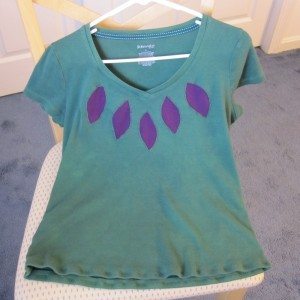
I combined the high-necked shirt with one of the floppy ones to try out reverse applique a la Hope Studios, though I did not plan to retain both full t-shirts. First I put them both on and lined them up so any parts that have stretched with time to accommodate my shape matched. Then I freehanded some leaf shapes at the neckline and pinned there. I used a narrow zigzag to sew around the outside of the leaves, with the thread tension turned up and the presser foot tension turned down in an effort to avoid stretching out the fabric. I cut away the excess fabric of the inner t-shirt, leaving the leaves connected and a decent amount at the bottom so I could smooth it out and avoid it being obvious from the outside that there was an extra layer ending at a random spot. Only after that did I clip out the insides of the leaves on the top layer, using small pointed-tip scissors. My advice to anyone who wants to do this is: go slowly. If you nick the bottom layer there’s not much you can do about it.
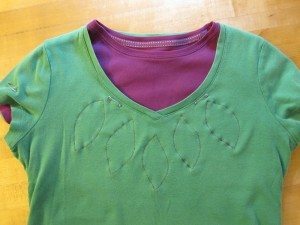
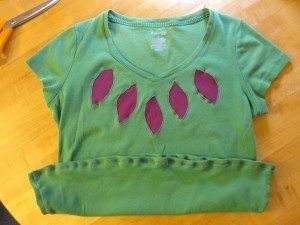
The top layer had a pinhole just above the hem stitching at center front, and to secure that as well as help with some of the floppy feeling, I turned the hem to the inside and stitched it up with a wider zigzag. All the stitching was in a thread that approximately matched the inner layer, though far from exact. I knew it didn’t matter too much because of the next step: overdying the whole shebang to harmonize the colors (which does not affect the thread). I gave them a 15 minute bath in a somewhat weak solution of royal blue RIT. I think that step might have been enough by itself to save the green shirt, because I love the finished color (which is richer than the photo at top makes it look).
Before I began the blog, referenced in my post about stitching with a twin needle but with mysteriously disappeared photos, I shortened several shirts, and bleached and re-dyed some others. I was using benzoyl peroxide on my face at the time and it was seemingly never possible to avoid damage to my clothing. I was pleased to realize that was almost three years ago and three of the four shortened shirts are still in rotation; the redyed shirts, however, are all retired. I don’t think I would bleach if I were doing that again. It is too hard on the fabric.
I’ll show you the results of the second project soon – it took a lot longer than anticipated!
